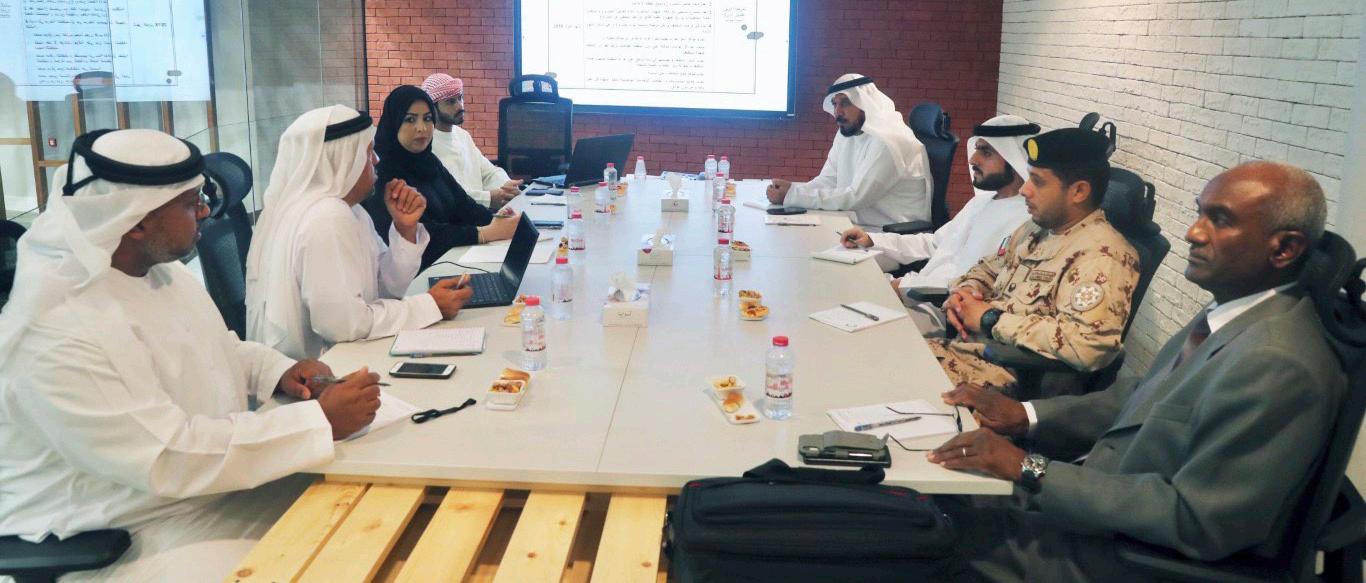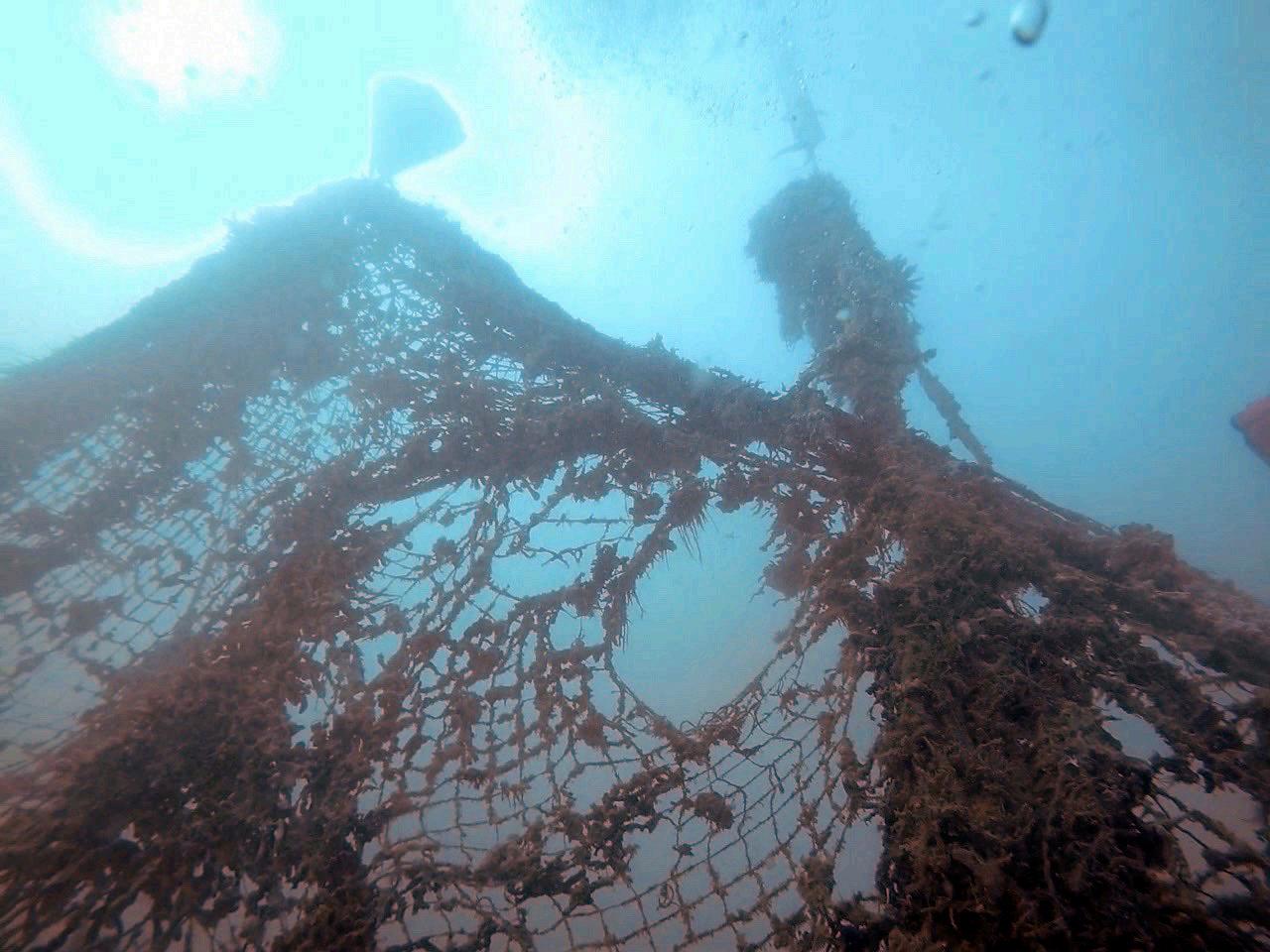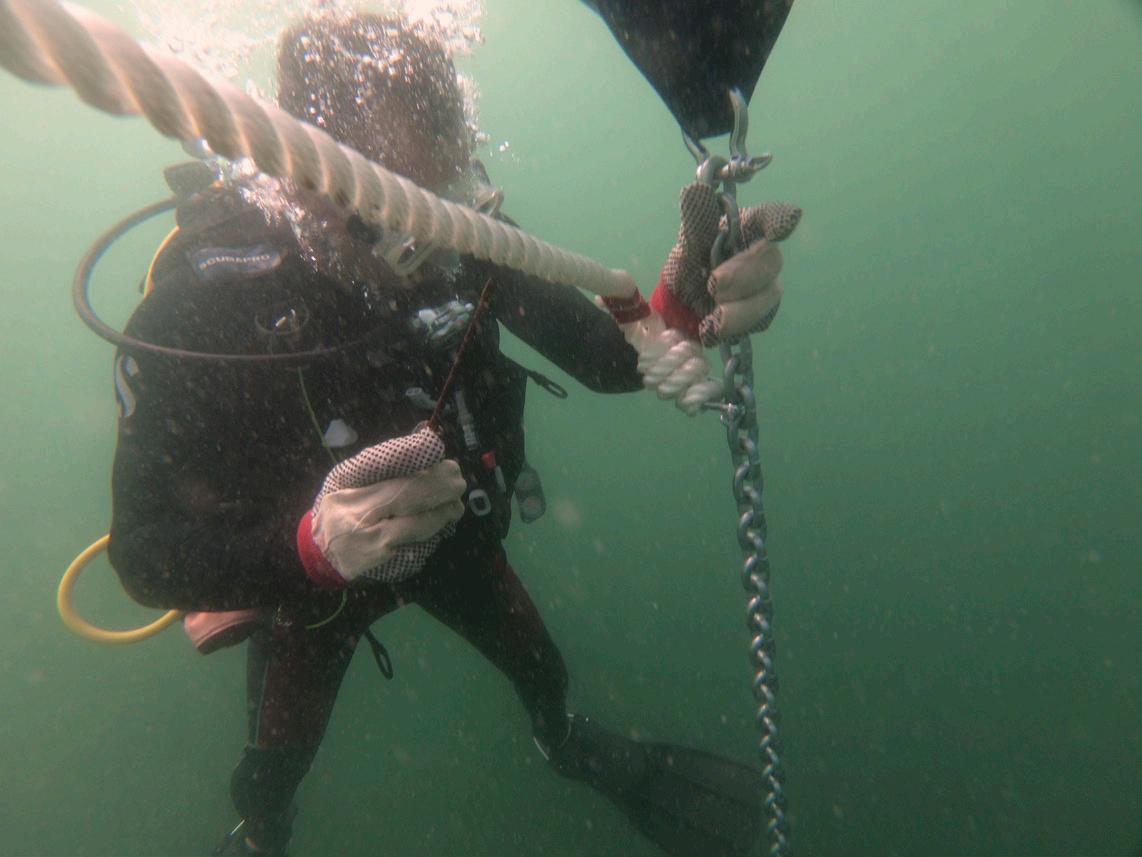
9 minute read
The Strategy Plan – The Dara Wreck Clean-up Project
FEATURE HAMIDEH MOOSA – DUBAI VOLUNTARY DIVING TEAM MEMBER
ABOUT THE MV DARA
The 120 metre passenger and cargo ship that was owned by the British India Steam Navigation Company was one of three ships built after the Second World War in 1948. The vessel had sailed from Bombay on a round trip to Basra, arriving in Dubai on the 7 th of April.
The Dara sank in the Arabian Gulf on the 8 th of April, 1961, as a result of a powerful explosion that caused the deaths of 238 of the 819 persons on board, including 19 officers and 113 crew members. Another 565 persons were rescued during an operation by a British Army tank landing craft, a number of ships of the Royal Navy, and several British and foreign merchant ships.

WHY WE CONSIDER THE DARA OUR MOST IMPORTANT CLEAN-UP
The Dara holds a significant place in the hearts of divers due to the tragic accident that took place. We consider it an important monument and commemorate its story each year in honour of Britain, India, the UAE and other countries that suffered missing persons and victims.
Recreational divers requested us to clean the wreck due to the large number of nets on it which caused danger and concern to them and hindered them from practicing safe dives.
THE FIRST CLEAN-UP PLAN
In 2014 we began putting the first plans together in order to inspect and clean the Dara with 15 volunteer divers in coordination with the Emirates Diving Association (EDA). The wreck was indeed examined and we discovered a large amount of fishing nets, ropes and fishing cages covering the vessel which masked its features. Due to our lack of knowledge with which authorities to contact and the limited logistical support we had at the time, we decided to postpone the mission. The mission needed to be broken down into several trips, lifting and recovery equipment was needed, as well as other items we did not yet have access to.

THE SECOND CLEAN-UP PLAN AND ITS SUCCESS
The Dara was not forgotten and we continued to seek the permissions to run the Dara cleanups. The Dubai Voluntary Dive Team launched its ‘Stuck Threads’ initiative in 2017 for people to report ghost nets to them in cooperation with the Ministry of Climate Change and Environment, and in the process, we started to receive contacts to renew the clean-up plans for the Dara project.

Another campaign had just been organised by the Sharjah Aquarium to do a clean-up dive on the Dara with 20 volunteer divers, where they successfully retrieved about 300 kg of waste on that day. With our dive and fishing site clean-up experiences however, we knew that the Dara would need several months of follow-up cleans to completely clear it of all the debris.
We took every opportunity we could to meet the concerned marine environment authorities in Umm Al Quwain. We took part in the Dubai International Boat Show in 2019 which led to us meeting with officials from the Emirate of Umm Al Quwain who in turn invited us to participate in the fishing festival. We welcomed the invitation which had been a valuable opportunity to meet the stakeholders to discuss our clean-up plans and the idea to discuss meeting with the fishermen to educate them on preserving the marine environment and inform them about the successes of our ‘Stuck Threads’ initiative.

We want to thank Sheikh Majid bin Saud Al Mualla, Head of the Department of Tourism and Archaeology in Umm Al Quwain and his team for that invitation, and for their concern in preserving the marine environment and heritage in the country.
STAGE 1: COORDINATING BETWEEN THE STRATEGIC PARTNERS AND THE DEVELOPMENT PLANS
The Dubai Voluntary Diving Team was contacted by the Department of Tourism and Archaeology in Umm Al Quwain in which a preliminary meeting was held to find out about the status of the Dara, discuss the necessary details to clean the shipwreck, the duration, and matters related to the field work. The Umm Al Quwain Cooperative Society for Fishermen, the Umm Al Quwain Municipality Department, the Police, the Coast Guards and the Zayed International Foundation for the Environment were all present to discuss the issues, exchange ideas and distribute the roles and responsibilities to each governing member. An agreement was made to start the project in October 2019.
The following were agreed and successfully, and efficiently carried out:
• Fishermen were to stay away from the wreck site and not to engage in any fishing activities.
• Facilitate the process of entry and exit for the divers from the fishermen’s port in Umm Al Quwain.
• The municipality was to provide logistical support to dispose of the debris collected.

STAGE 2: THE SHIP INSPECTION AND CLEANING STAGES
• WRECK INSPECTION: The team made a trip to inspect the wreck in October 2019 and estimated the volume of debris on the ship, the type of debris, and the estimated time needed to complete the job.
• TEMPORARY BUOY INSTALLATION: To facilitate the clean-up process and protect the vessel from damage, we suggested installing 3 temporary mooring buoys on the bow, middle and stern of the ship to avoid anchoring on the wreck site. Mooring buoys act as location markers which would speed up pinpointing and accessing the wreck during the project. We started installing the temporary mooring buoys in November 2019 with ropes and chains attaching them to 3 strong points that could hold one or more boats tied to them.

• CLEAN-UP DIVES: We began the cleanup dives a week after the mooring buoys were successfully installed. The team were not without challenges. They experienced the 2 drastic climate changes during the project, from the cold waters of the UAE’s winter season and the extremely hot water and air of the summer months. With the amount of nets and the complexity of their removal, the dive teams were split into 3 groups allowing each team to do approximately 7 to 9 dives per day by using NITROX of 32%, 36% and 38%, allowing them a longer bottom time and a shorter surface interval.
THE 3 TYPES OF NET AND OTHER DEBRIS FOUND ON THE WRECK
1. The very dense hanging nets which had accumulated covered the features of the ship and its large entry and exit points. Most of these nets had not lost their durability and these particular nets have a commercial lifespan of 4 or less years. They were incredibly heavy nets and extra care was needed to not cause any damage to the Dara. Their recovery took 4 months to complete from November 2019 to February 2020.
2. Nets attached to the hull of the ship on the seabed were full of dead oysters, fish, snails, and flora. Most of these nets were worn out (50%) and they have a commercial lifespan of 4 years and above. This category of nets covered large areas of the boat’s hull – to put it into perspective, the Dara is 120 metres in length. These nets were recovered in March 2020 to June 2020 as all trips had been suspended from March 23 to May 28 due to the precautionary instructions of the corona pandemic.
3. The hidden nets and ropes found under the top layer of debris, date back to the 1990s or before. These broken up nets were buried in the seabed and were a delicate and difficult task to collect due to their brittle state.
4. We also found fishing cages and plastic waste. The fishing cages were left as they were and their doors were opened and removed, but the plastic materials were retrieved to properly dispose of them.

STAGE 3: POST CLEAN-UP
Strict measures are now taken in order to maintain a clean environment on the wreck and keep it free of fishing gear, organised by the Department of Tourism and Archaeology in Umm Al Quwain, in coordination with the strategic partners.
The steps and measures taken are:
1. Installation of permanent mooring buoys with high-quality specifications that can withstand climatic conditions for divers and dive boats.
2. Installation of permanent demarcation buoys to indicate the allowable wreck approach and boundaries, with international specifications that can withstand climatic conditions at the site.
3. Fishermen are not permitted to practice any kind of fishing activities on the site, and warning signs are to be placed on the buoys as a reminder.
4. Scuba divers and other seagoers are to communicate with the authorities in the case of finding any violations or abnormalities on the site.
5. Continuous monitoring will be done by the authorities to ensure that all divers, fishermen and other seafarers abide the Dara’s historical site warnings, protecting the marine environment and the condition of the mooring buoys.

STAGE 4: THE OFFICIAL LAUNCH
The Dara has become a historical dive site. Divers, tourists, and those interested in history, archaeology and exploration can visit the dive site through the various programmes issued by the Umm Al Quwain authorities.
We extend our sincere appreciation to the organiser and owner of this strategic project, the Department of Tourism and Archaeology in the Emirate of Umm Al Quwain and hold a special thanks to Sheikh Majid bin Saud Al Mualla, Head of the Department of Tourism and Archaeology for his dedication to the Dara, as well as his team.
We would also like to thank the Zayed International Foundation for the Environment represented by His Excellency Major General Mohd Ahmed bin Fahd and his team for their support to cover the materials and field costs of the project, and for their interest and eagerness to support our volunteering work. Thank you for preserving the marine environment in several other projects in addition to the Dara.
We thank all the authorities who coordinated and contributed in the success of the project:
• Umm Al Quwain Municipality
• Umm Al Quwain Police
• Critical Infrastructure & Coastal Protection Authority (Third Squadron)
• Fishery Association of Umm Al Quwain
• Ministry of Climate Change and Environment
Another big thank you to the team’s sponsors throughout the year:
• P&O Marinas
• EDA
• Al Tayar Team
• Suzuki Autosport
• Bermuda Diving Center
Last, but not least, we also want to thank the most important group of the project who are our team volunteers for their efforts, providing their valuable time and their determination. They accomplished the tasks in the harshest climatic conditions and overcame all the difficulties.
GENERAL INFORMATION
Total Volunteering Hours: 15,134
Number of Trips: 17
Distance Covered: 1,352 km
Fishing Nets Collected: 7,720 kg
Accidents/Injuries: 0










